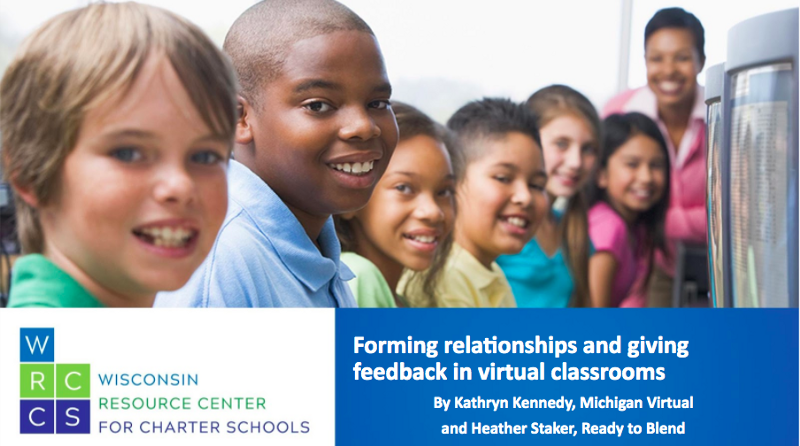School closures have forced educators to think creatively about how to reposition and deliver their content. This gives us an opportunity to adapt our teaching methods to best suit the needs of the time. At Headrush, we know remote learning does not have to be a substitute for the real thing; in fact, learning doesn’t have to happen between the four walls of a classroom — learning can happen anytime, anyplace, anywhere. It happens in all shapes and sizes. As a result of remoteness, our thought partners, the WI Resource Center for Charter Schools (WRCCS) established these best practices for virtual learning spaces. With distance learning being the new normal, let’s level-up our skills and support students to become self-directed, deep learners, whether inside or outside the classroom.
Here are 4 Best Practice Tips for Virtual Learning Spaces
1. How to Make the Most of a Video Introduction
Read this article from THE Journal to understand the positive impact of launching online courses and lessons with personal video introductions. Pay attention to the shift in student engagement in online classrooms where the teacher included an intro video and where the teacher did not.
Resource: Title, How to make the most of a video introduction for an online course, Format: Online journal, Length: 3 pages
2. Encourage Peer Coaching
As you watch this video about research from Arizona State University, choose at least one strategy to encourage peer coaching in your virtual classroom, such as asynchronous texting, synchronous texting, synchronous voice, synchronous voice & video, or face-to-face meetups.
Resource: Title, Encourage peer coaching to improve student outcomes, Format, YouTube video, Length, 2:24 minutes
3. Forming Relationships and Giving Feedback
Review and learn the principles in these slides about how to form genuine relationships and give feedback in your online classroom.
Resource: Title, Forming relationships and giving feedback in virtual classrooms, Format, Slides, Length, 6 slides
4. Teaching Presence in Online Learning
Watch this video to learn tips and strategies from Dr. Mark Kassel from Fox Chapel Area School District about teacher presence in online learning. Note his suggestions about announcements, videos, emails, and the mindset of looking for opportunities to build personal connection.
Resource: Title, Teaching presence in online learning, Format, YouTube video, Length, 10 minutes
Additional Resources:
How to make the most of a video introduction for an online course
Read this article from THE Journal to understand the positive impact of launching online courses and lessons with personal video introductions.
Forming relationships and giving feedback in virtual classrooms
Review and learn the principles in these slides about how to form genuine relationships and give feedback in your online classroom.
Online Learning Guides:
This is a mentor guide to support best practices for mentoring online learners.
This is a student guide to support students with online learning.
Supporting research:
Burch, T., & Nagy, J.. (2007). Tipping points in online-mediated learning environments: Strategies for student engagement in a conceptual framework for e-Learning. International Journal of Learning, 13(12), 7–15.
Dulaney, E. (2013). Does the Credibility of the Presenter Influence Acceptance of Content in the Classroom. American International Journal of Social Science, 2(4), 14–20.
Garrison, D. R., Anderson, T., & Archer, W. (2000). Critical inquiry in a text-based environment: Computer conferencing in higher education. Internet and Higher Education, 2(2–3), 87−105.
Jones, P., Naugle, K., & Kolloff, M. (2008). Teacher presence: Using introductory videos in hybrid and online courses. Learning Solutions. Retrieved on March 26, 2014 from learningsolutionsmag.com
Kuo, Y., Walker, A. E., Schroder, K. E. E., Belland, B. R. (2014). Interaction, Internet self-efficacy, and self-regulated learning as predictors of student satisfaction in online education courses. The Internet and Higher Education, 20, 35–50
Moore-Adams, B. L., & Warnick, S. (2016). Establishing presence and community in the online classroom.
Russo, T. C., & Campbell, S. W. (2004). PerceptioKns of mediated presence in an asynchronous online course: Interplay of communication behaviors and medium. Distance Education, 25(2), 215–232.
Trinh, M. The effects of peer coaching on online student learning outcomes. Institute for the Science of Teaching and Learning. Arizona State University. Retrieved on June 29, 2018 from https://istl.asu.edu/effects-peer-coaching-online-student-learning-outcomes

